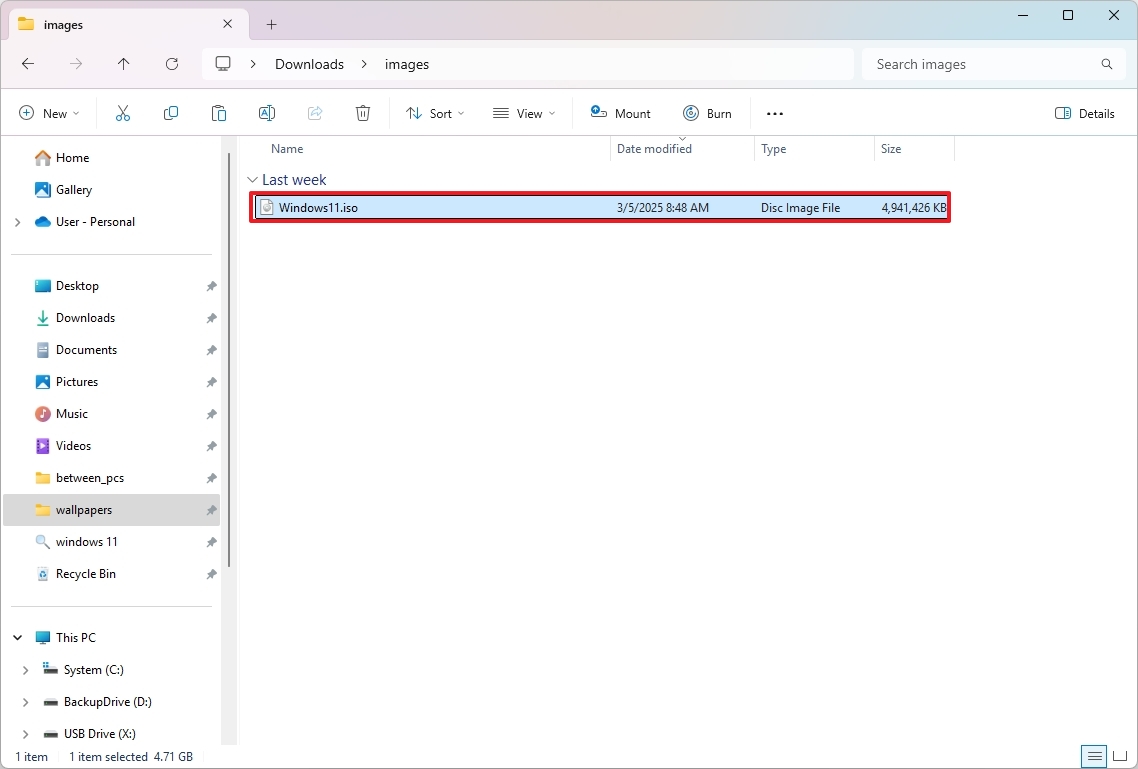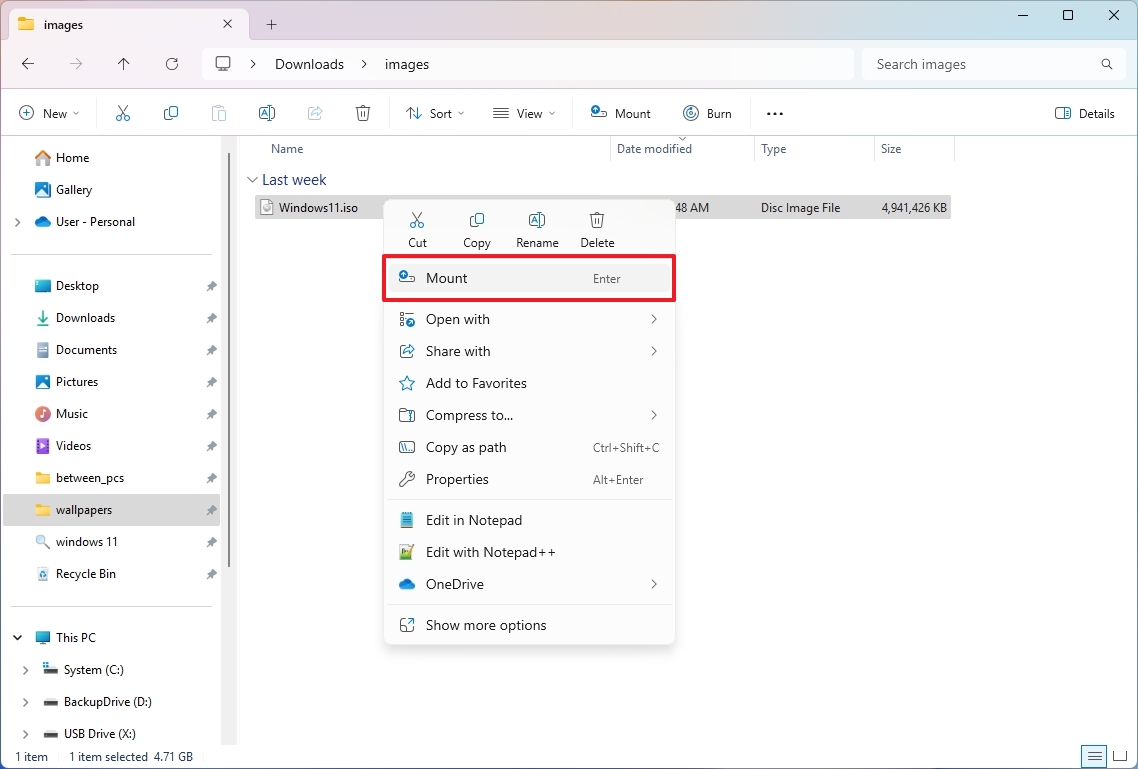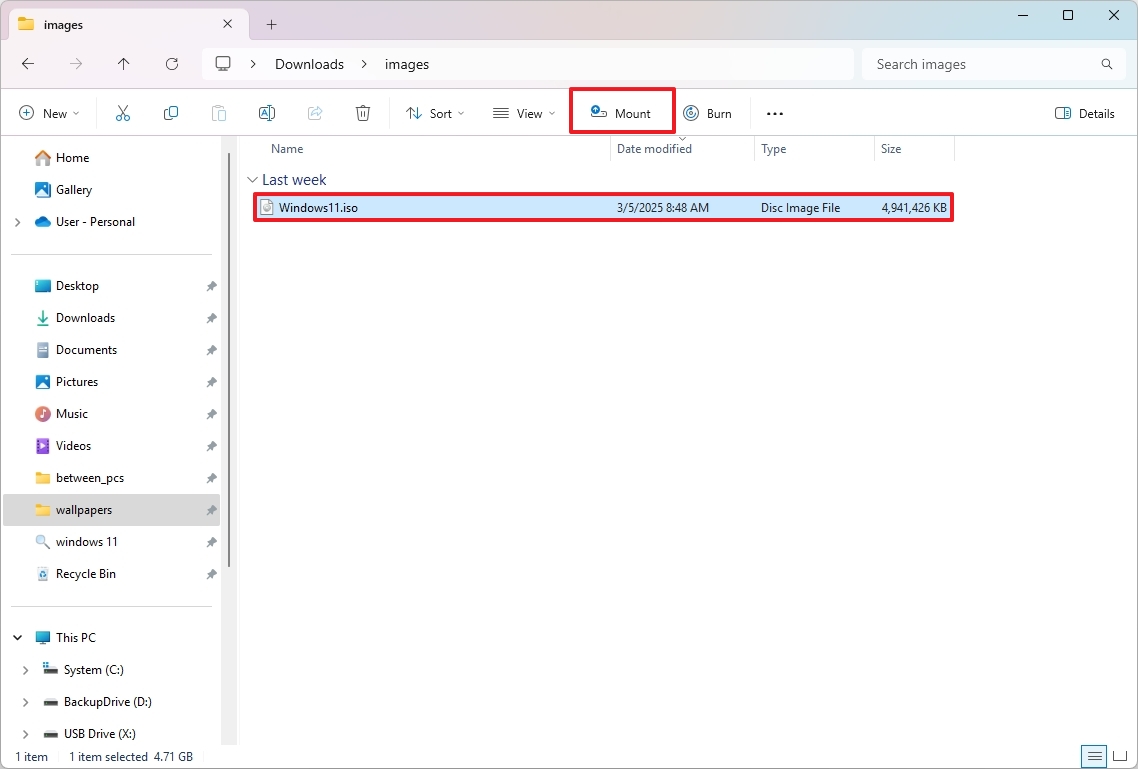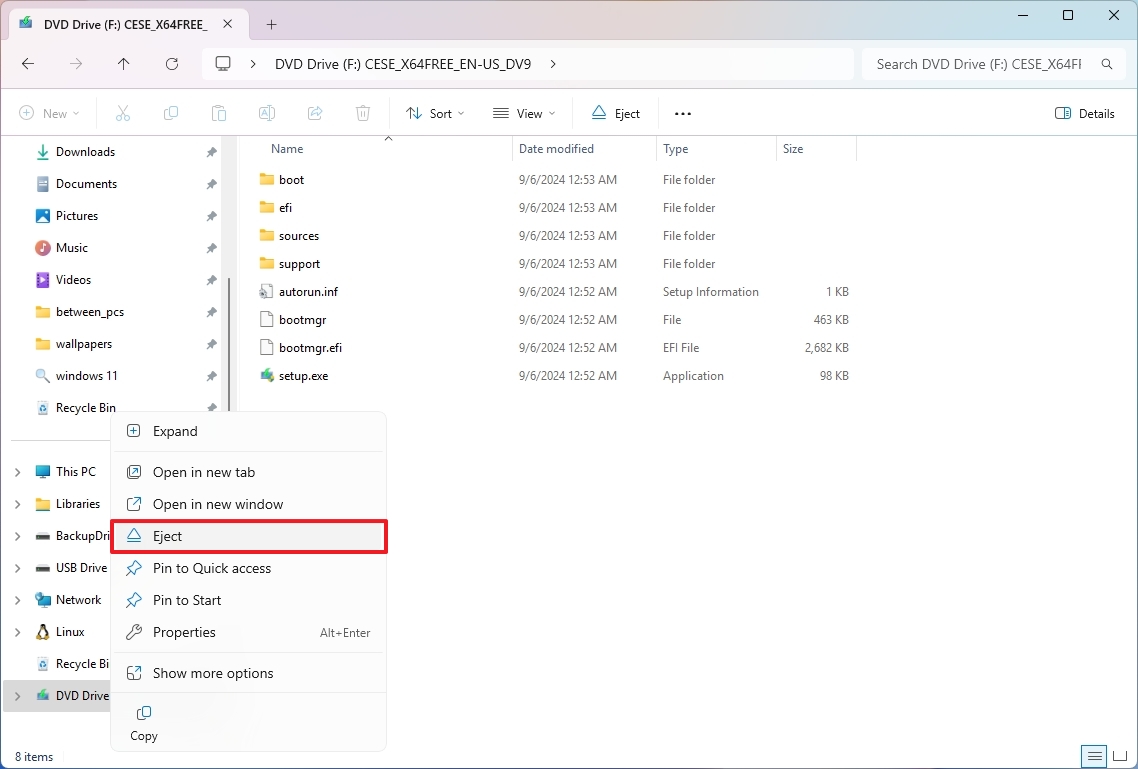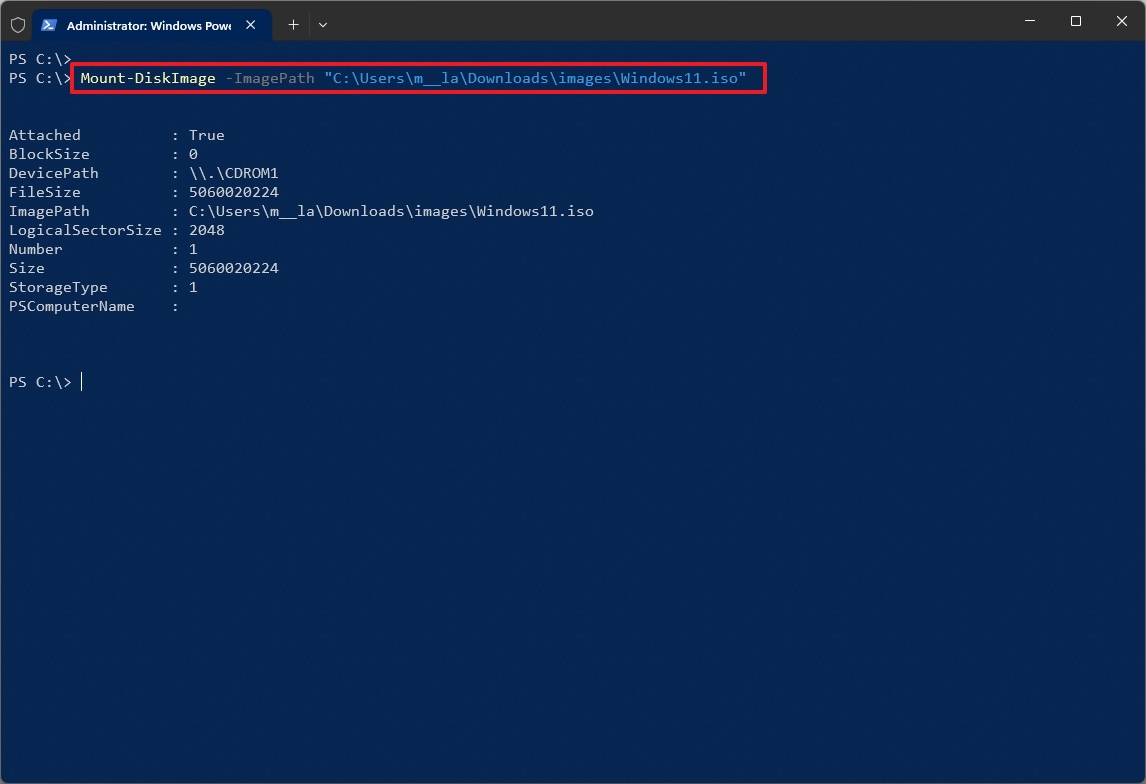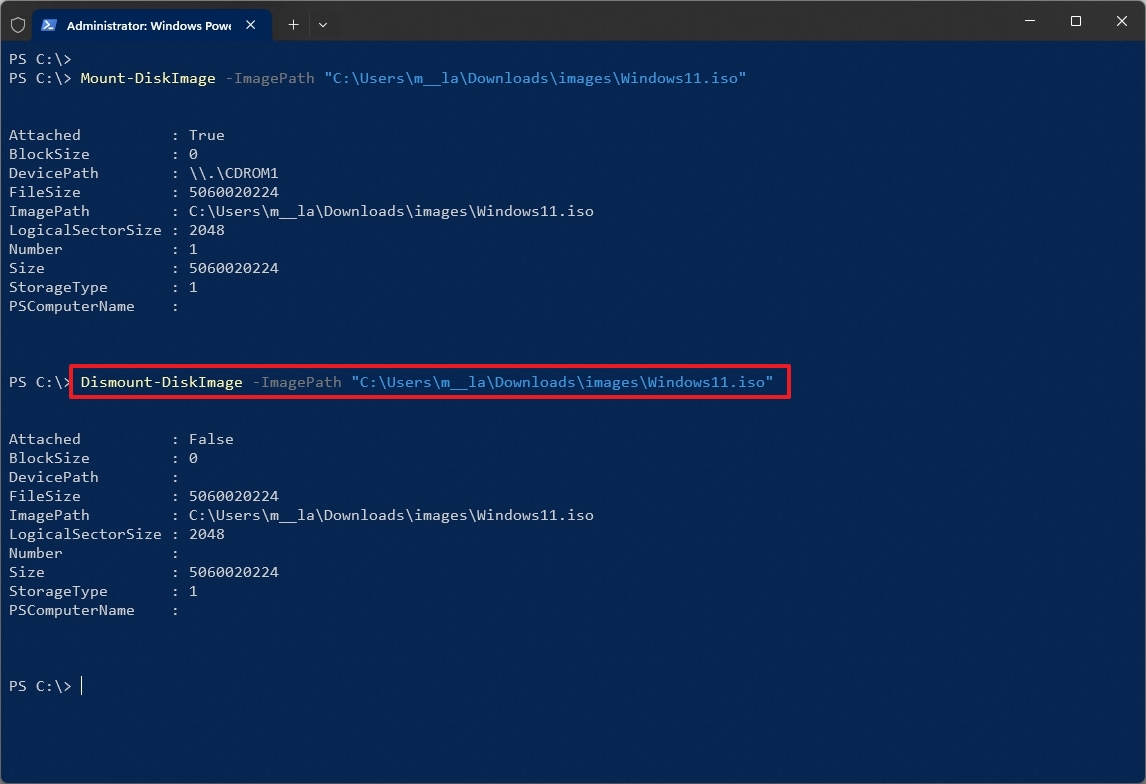How to mount ISO images on Windows 11 and 10
You can access or extract the contents of an ISO image without third-party tools, and in this guide, you'll learn how to complete this process.
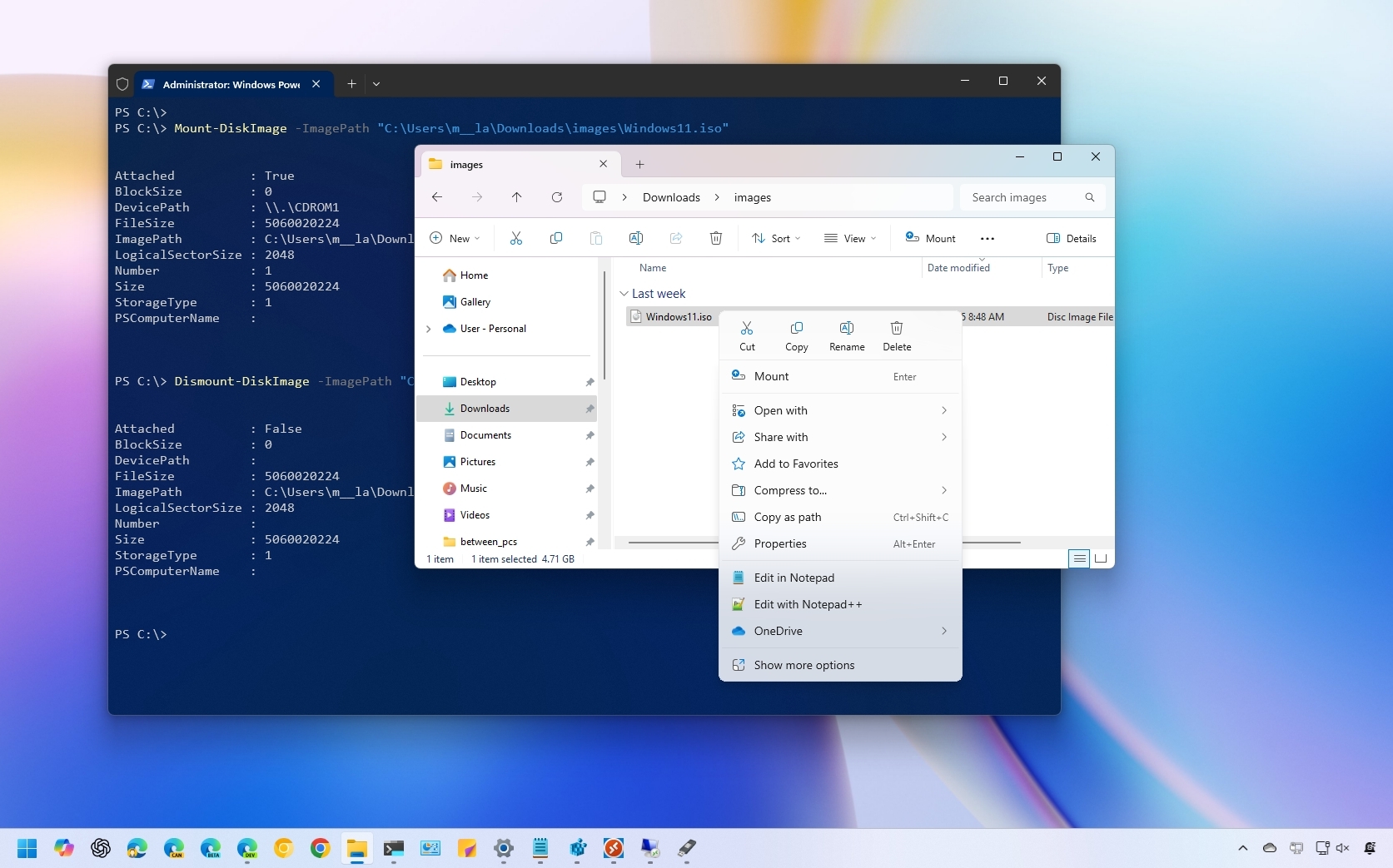
An ISO image is a digital replica of a physical disc, such as a CD, DVD, or Blu-ray, encapsulating all its data and file structures into a single file. This format is widely adopted by software companies to distribute apps and tools efficiently, eliminating the costs and logistics associated with physical media. For instance, Microsoft uses ISO images to distribute Windows 11 (and 10) installation files as well as previews to testers and various other products.
Although many tools exist for working with images, Windows 10 and Windows 11 include the ability to mount ISO files natively without the need for extra software.
In this how-to guide, I'll show you how to mount and unmount the ISO images using File Explorer and PowerShell commands.
How to mount ISO image with File Explorer
On Windows 11 and 10, File Explorer allows you to access the content of an image in at least three different ways: double-clicking the file, using the context menu option, or using the option available in the ribbon menu.
Mount image with double-click
To quickly mount an ISO file on Windows 11 (or 10), use these steps:
- Open File Explorer.
- Browse to the folder with the ISO image.
- Double-click the .iso file to mount it.
Once you complete the steps, the ISO file will open like any other folder, allowing you to access and extract the contents as necessary.
This action will work as long as you don't have another app set as the default for ".ISO" extensions.
All the latest news, reviews, and guides for Windows and Xbox diehards.
Mount image from context menu
To mount an ISO image with the File Explorer context menu, use these steps:
- Open File Explorer.
- Browse to the folder with the ISO image.
- Right-click the .iso file and select the Mount option.
Once you complete the steps, you can access the contents of the image by selecting the virtual drive from the left navigation pane.
Mount image from ribbon menu
To mount an image with the ribbon menu, use these steps:
- Open File Explorer.
- Browse to the folder with the ISO image.
- Select the .iso file.
- Click the Mount button.
On Windows 10, the option is located in the "Disc Image Tools" tab.
Unmount image
Once you are no longer using the image, you can quickly unmount the image with these steps:
- Open File Explorer.
- Expand This PC from the left navigation pane.
- Right-click the virtual drive and select the Eject option.
After you complete these steps, the image will no longer be accessible until you mount it again.
How to mount ISO image with PowerShell
It's also possible to mount and unmount an image using commands with PowerShell.
Mount ISO image command
To mount an ISO image using a PowerShell command, use these steps:
- Open Start.
- Search for PowerShell, right-click the top result, and select the Run as administrator option.
- Type the following command to mount an ISO image and press Enter: Mount-DiskImage -ImagePath "PATH\TO\ISOFILE"
In the command, make sure to replace the "PATH\TO\ISOFILE" with the actual path of the .iso file. For example, this command mounts an image in the "X:\" virtual drive: Mount-DiskImage -ImagePath "C:\Users\USERNAME\Downloads\images\Windows11.iso"
Once you complete the steps, the ISO image will mount, and you will be able to access the contents to install the application or extract the image contents from the newly-available drive letter.
Unmount ISO image command
To unmount an image with PowerShell, use these steps:
- Open Start.
- Search for PowerShell, right-click the top result, and select the Run as administrator option.
- Type the following command to mount an ISO image and press Enter: Dismount-DiskImage -ImagePath "PATH\TO\ISOFILE"
In the command, make sure to replace the "PATH\TO\ISOFILE" with the actual path of the .iso file. For example, this command removes the mount for an image in the "X:\" virtual drive: C:\Users\USERNAME\Downloads\images\Windows11.iso
After you complete the steps, the virtual drive will be removed, and the image will no longer be accessible until you mount it again.
More resources
Find in-depth guides, troubleshooting tips, and the latest updates on Windows 11 and 10 here:

Mauro Huculak has been a Windows How-To Expert contributor for WindowsCentral.com for nearly a decade and has over 22 years of combined experience in IT and technical writing. He holds various professional certifications from Microsoft, Cisco, VMware, and CompTIA and has been recognized as a Microsoft MVP for many years.
You must confirm your public display name before commenting
Please logout and then login again, you will then be prompted to enter your display name.
